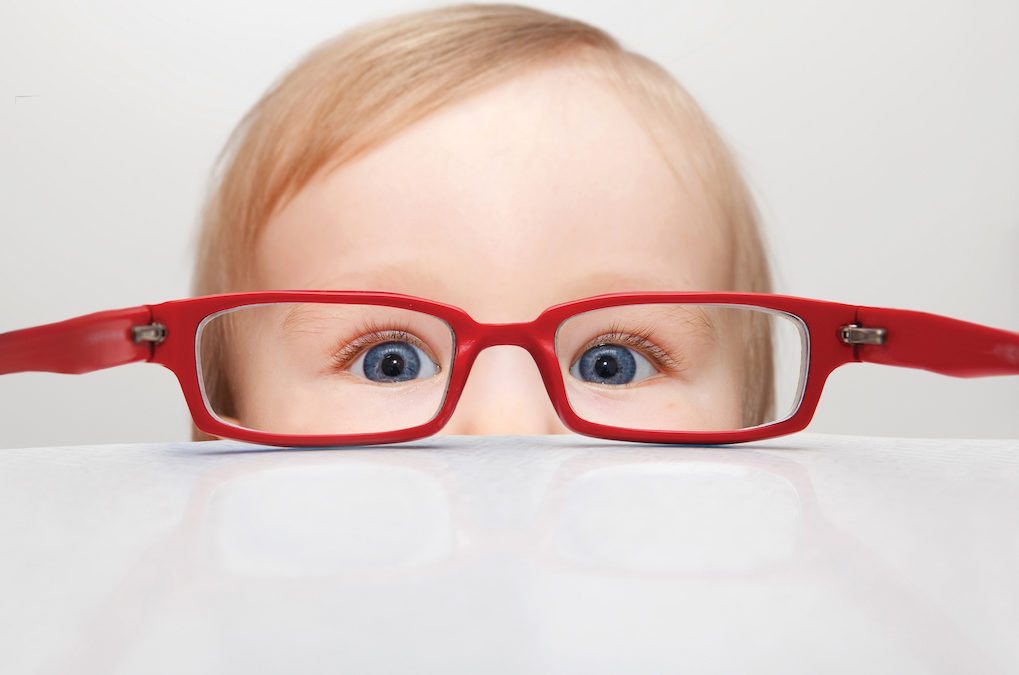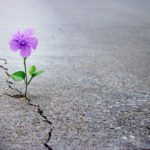If we’re less lucky and don’t have other responsive, loving humans around us, those cries and sniffles become self-soothing – a way of clearing out our system so we can return to the bliss and well-being we born into that most closely replicates (or so I’m assured by people who should know such things) the feeling of being in the womb.
We learn our bodies – first the feelings of warm and cold, hungry and full, wet and dry, then with our mouths as we learn to suckle and taste, then visually – we discover our hands and fingers and legs and feet and toes and that we in some very real way are connected up with them.
We become fascinated with the world around us, and as our little brains begin to grow and make new connections, we want to interact with it. What does that thing over there feel like? What does it taste like? What does it do?
Eventually, getting from here to there shuffling along on our bottoms seems frustratingly slow, and we learn to crawl. When crawling stops being the most efficient means of travel, we copy the big humans around us and experiment with a two-legged mode of transport. After hundreds of attempts, this trial and error becomes trial and success and we’re toddling across the room.
As we discovered the first time our cries brought relief in the form of physical touch, food, and comfort, communication became high on our list of learning tasks to devour. When our cries stopped containing sufficient nuance to impart our increasingly nuanced desires, we experimented with other means, pointing and attempting to mimic the sounds the giant humans used. Eventually, when trial and error turned into trial and success, we graduated from “mama” and “dada” to “milk” and “cookies” to Dick and Jane to Kafka and Schopenhauer. (OK, so I might have skipped a few steps… :-)
Yet at some point, our innate learning monster was tamed – it got bored and went to sleep. Some of this happened at school – as Mark Twain reputedly said “if people learned to walk and talk the way we teach them to read and write, everyone would limp and stutter.” Breaking down tasks into their constituent elements and replacing trial and error, trial and success experimentation with mindless repetition and rote memorization turns out to be a pretty reliable way to tame the beast.
But the biggest taming tool that we inadvertently face growing up is the secret demon of positive and negative reinforcement. As the innate curiosity and satisfaction of the learning process gets distorted by our desire to be liked, appreciated, and rewarded for everything we do, we start to try to avoid the “error” part of the equation and not make any mistakes.
Since it’s impossible to learn anything new without making dozens, hundreds, or even thousands of mistakes depending on the complexity of the task, the easiest way to avoid it is to not attempt it, or to attempt it so tentatively that it’s obvious to everyone around you that you weren’t really trying so can’t be held accountable for your lack of success.
But here’s the thing:
We were made to learn through experimentation – trial and error; trial and success. And self-consciousness is the number one enemy of this natural kind of learning and by proxy, what it’s possible for us to achieve in our lives. Because when our attention is on how we’re doing instead of the task at hand, we cut our natural learning ability off at the knees.
So how do we wake up the beast? How can we bring our natural curiosity and desire to learn back to life and set it loose to help us create our most impossible projects and goals?
By getting ourselves out of the way as best we can. In a very real way, “you” are just a collection of habitual thoughts. “You” are a character in the play of life, and chances are you chose some aspects of your character very carefully without noticing that “the kind of person you are” is all made up.
For example, for most of my life I thought of myself as shy. The fact that I spent much of my life in the spotlight in front of groups had no impact on that self-perception, other than as a curious anomaly.
“Isn’t that interesting,” I thought to myself. “It must be that my shyness only manifests when I’m in small groups, or when I’m one on one, or it doesn’t happen on Tuesday’s”, or whatever it was I thought at the time.
But it wasn’t until one day when I was invited to a party and heard the voice in my head say “But I’m shy!” followed almost immediately by another voice saying “What if you weren’t?” that it began to change.
I noticed that when I wasn’t thinking about being shy, I interacted with people about as well as anyone else I knew. And when I started doing it more, I got better at it. I found out that “small talk” is no more meaningless than “big talk” if it facilitates a deeper connection with a fellow human being. And that when I stopped trying to work out what I was going to say while the other person was talking, words magically appeared in my mouth when it was my turn that were curiously relevant to what I had actually heard come out of theirs.
In other words, my natural learning ability came to the fore. Because I didn’t stop myself from trying, I didn’t stop myself from failing. And because I didn’t stop myself from failing, I began to succeed, more and more of the time.
So here’s an experiment for today. You will fail at it multiple times, and if you keep going you will succeed more and more of the time…
- Choose a task that you normally wouldn’t do because of self-consciousness – asking for help, singing, drawing a picture, or striking up a conversation with someone you don’t yet know.
- Do it. Suck at it. Fail. Get it wrong. But…
- Stay out of your head about it as best you can. When you hear the voices of doom in your mind or feel the feeling of impending disaster in your body, swipe left. (I’m assured this is a culturally relevant reference to getting rid of something you aren’t attracted to and don’t want to spend time with.)
- See what happens.
Chances are, your head won’t explode, and you may well wind up with some help, a picture, and an interesting conversation or two. Better still, you may find the next time you get an interesting idea about what might be possible, you’ll find yourself moving forward like a toddler on a mission, learning as you go without ever losing sight of your goal.
Have fun, learn heaps, and happy exploring!
With all my love,
![]()






